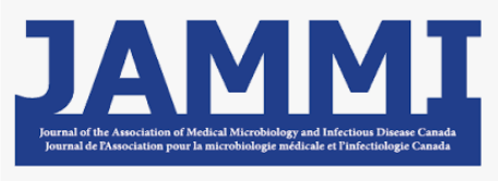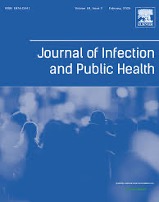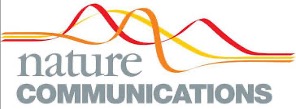This 2-year longitudinal cohort study assessed health-related quality of life (HRQoL) in 413 outpatients with post-COVID-19 condition (PCC) compared to 520 recovered individuals. Using EQ-5D-5L and the Clinical Frailty Scale, researchers found that PCC participants had significantly lower HRQoL scores from 3 to 18 months post-infection, with continued decline observed only in the PCC group. Pain, anxiety/depression, and limitations in usual activities were the most affected dimensions. These findings underscore the prolonged impact of PCC on well-being and highlight the importance of long-term monitoring and targeted mental health support.
Publications

Mercier K, Piché J, Rioux-Perreault C, Lemaire-Paquette S, Piché A.
J Assoc Med Microbiol Infect Dis Can. 2024 Jan;8(4):309‑18.
A longitudinal prospective cohort study of health-related quality of life assessment in outpatient adults with post-COVID-19 conditions.

Jalbert L, Hautin AS, Baron M, Dubé È, Gagné M, Girard C, et al.
J Infect Public Health. 2024 Jan 9;17(3):421‑9.
Motivation to participate and attrition factors in a COVID-19 biobank: A qualitative study.
This qualitative study explored factors influencing participation and attrition in the BQC19 biobank from the perspectives of both participants and professionals. Interviews revealed that motivations to participate included contributing to science, feeling valued, and positive interactions with healthcare providers. Attrition was linked to logistical issues, mistrust of public health or genomic research, fear of medical environments, and pandemic fatigue. The evolving context of the pandemic, including changing public attitudes and institutional constraints, also affected retention efforts. These findings highlight the need to address participant and operational challenges in longitudinal biobanking during public health crises.

Fournelle D, Mostefai F, Brunet-Ratnasingham E, Poujol R, Grenier JC, Gálvez JH, et al.
Viruses 2024 Feb 23;16(3):342.
Intra-Host Evolution Analyses in an Immunosuppressed Patient Supports SARS-CoV-2 Viral Reservoir Hypothesis.
Throughout the SARS-CoV-2 pandemic, several variants of concern (VOCs) have been identified, many of which share recurrent mutations in the spike glycoprotein’s receptor-binding domain (RBD). This region coincides with known epitopes and can therefore have an impact on immune escape. Protracted infections in immunosuppressed patients have been hypothesized to lead to an enrichment of such mutations and therefore drive evolution towards VOCs. Here, we present the case of an immunosuppressed patient that developed distinct populations with immune escape mutations throughout the course of their infection. Notably, by investigating the co-occurrence of substitutions on individual sequencing reads in the RBD, we found quasispecies harboring mutations that confer resistance to known monoclonal antibodies (mAbs) such as S:E484K and S:E484A. These mutations were acquired without the patient being treated with mAbs nor convalescent sera and without them developing a detectable immune response to the virus. We also provide additional evidence for a viral reservoir based on intra-host phylogenetics, which led to a viral substrain that evolved elsewhere in the patient’s body, colonizing their upper respiratory tract (URT). The presence of SARS-CoV-2 viral reservoirs can shed light on protracted infections interspersed with periods where the virus is undetectable, and potential explanations for long-COVID cases.

Bu S, Royston L, Mabanga T, Berini CA, Tremblay C, Lebouché B, et al.
Front. Immunol. 15:1377126
Proteomics validate circulating GDF-15 as an independent biomarker for COVID-19 severity
This study assessed the role of growth differentiation factor 15 (GDF-15) as a biomarker of COVID-19 severity in a cohort of 926 patients. Plasma GDF-15 levels were significantly higher in COVID-19 patients compared to hospitalized controls and increased with disease severity. Elevated levels were also associated with age and comorbidities such as diabetes, COPD, cancer, and cardiovascular disease. GDF-15 correlated with inflammatory markers (IL-6, CRP), but not with anti-SARS-CoV-2 antibodies. These findings support GDF-15 as a promising biomarker for identifying patients at risk of severe COVID-19 and guiding clinical management.

Barrueta Tenhunen A, Butler-Laporte G, Yoshiji S, Morrison DR, Nakanishi T, Chen Y, et al.
Physiol Genomics. 2024 Jul 1;56(7):483-491
Metabolomic pattern associated with physical sequelae in patients presenting with respiratory symptoms validates the aestivation concept in dehydrated patients.
This study validated a dehydration-induced metabolic response resembling aestivation in a non-COVID cohort from the BQC19 biobank. Among 824 patients, higher estimated osmolality (eOSM)—a marker of hypertonic dehydration—was linked to increased urea and amino acid levels, suggesting muscle wasting. Severe dehydration correlated with worse acute outcomes (mortality, mechanical ventilation, kidney injury) and with persistent physical, but not mental, long-term symptoms. Sex-stratified analysis suggested women may exhibit a weaker aestivation response. These findings support a link between dehydration, metabolic shifts, and long-term physical decline following acute illness.

Khoramjoo M, Wang K, Srinivasan K, Gheblawi M, Mandal R, Rousseau S, et al.
PLoS One. 2024;19(6):e0304522.
Plasma taurine level is linked to symptom burden and clinical outcomes in post-COVID condition
This study investigated the role of plasma taurine in post-COVID condition (PCC) by analyzing proteomic and metabolomic data from 117 hospitalized COVID-19 patients and 28 healthy controls. Lower taurine levels were linked to PCC symptoms and markers of inflammation and gut dysbiosis. Patients with increased taurine levels during recovery had significantly fewer adverse clinical events, independent of comorbidities or initial disease severity. Multivariate analysis confirmed taurine as a strong protective factor (HR = 0.13, p < 0.001). These findings position taurine as a promising biomarker and potential therapeutic target for PCC.

Brunet-Ratnasingham E, Morin S, Randolph HE, Labrecque M, Bélair J, Lima-Barbosa R, et al.
Nat Commun. 2024 May 16;15(1):4177.
Sustained IFN signaling is associated with delayed development of SARS-CoV-2-specific immunity.
Plasma RNAemia, delayed antibody responses and inflammation predict COVID-19outcomes,butthemechanismsunderlyingtheseimmunovirological patterns are poorly understood. We profile 782 longitudinal plasma samples from 318 hospitalized patients with COVID-19. Integrated analysis using k-means reveals four patient clusters in a discovery cohort: mechanically ventilated critically-ill cases are subdivided into good prognosis and highfatality clusters (reproduced in a validation cohort), while non-critical survivors segregate into high and low early antibody responders. Only the highfatality cluster is enriched for transcriptomic signatures associated with COVID-19 severity, and each cluster has distinct RBD-specific antibody elicitation kinetics. Both critical and non-critical clusters with delayed antibody responses exhibit sustained IFN signatures, which negatively correlate with contemporaneous RBD-specific IgG levels and absolute SARS-CoV-2-specificB and CD4+T cell frequencies. These data suggest that the “Interferon paradox” previously described in murine LCMV models is operative in COVID-19, with excessive IFN signaling delaying development of adaptive virus-specific immunity.

Amri O, Madore AM, Boucher-Lafleur AM, Laprise C.
BMC Genomics. 2024 May 16;25:482.
Genomic analysis of severe COVID-19 considering or not asthma comorbidity: GWAS insights from the BQC19 cohort.
This genome-wide association study (GWAS) investigated genetic and clinical factors linked to COVID-19 severity, including in patients with asthma, using data from 2131 individuals in the BQC19 cohort. Seven genetic variants near five genes (SCN10A, DSP, RP1, IGFL1, and DOK5) were associated with severe COVID-19. In patients with asthma, four additional variants were identified near TMEFF2 and HIP1. These results highlight distinct genetic markers associated with disease severity and suggest specific pathways that may influence outcomes in both asthmatic and non-asthmatic patients.

Devaux Y, Zhang L, Lumley AI, Karaduzovic-Hadziabdic K, Mooser V, Rousseau S, et al.
Nat Commun. 2024 May 20;15:4259.
Development of a long noncoding RNA-based machine learning model to predict COVID-19 in-hospital mortality
Tools for predicting COVID-19 outcomes enable personalized healthcare, potentially easing the disease burden. This collaborative study by 15 institutions across Europe aimed to develop a machine learning model for predicting the risk of in-hospital mortality post-SARS-CoV-2 infection. Blood samples and clinical data from 1286 COVID-19 patients collected from 2020 to 2023 across four cohorts in Europe and Canada were analyzed, with 2906 long non-coding RNAs profiled using targeted sequencing. From a discovery cohort combining three European cohorts and 804 patients, age and the long non-coding RNA LEF1-AS1 were identified as predictive features, yielding an AUC of 0.83 (95% CI 0.82–0.84) and a balanced accuracy of 0.78 (95% CI 0.77–0.79) with a feedforward neural network classifier. Validation in an independent Canadian cohort of 482 patients showed consistent performance. Cox regression analysis indicated that higher levels of LEF1-AS1 correlated with reduced mortality risk (age-adjusted hazard ratio 0.54, 95% CI 0.40–0.74). Quantitative PCR validated LEF1-AS1’s adaptability to be measured in hospital settings. Here, we demonstrate a promising predictive model for enhancing COVID-19 patient management.

Bédard-Matteau J, Soulé A, Liu KY, Fourcade L, Fraser DD, Emad A, et al.
Front Immunol. 2024;15:1452788.
Circulating IL-17F, but not IL-17A, is elevated in severe COVID-19 and leads to an ERK1/2 and p38 MAPK-dependent increase in ICAM-1 cell surface expression and neutrophil adhesion on endothelial cells.
This study explored the role of IL-17 family cytokines in COVID-19 severity, focusing on their link to neutrophilic inflammation and immunothrombosis. Analysis of plasma samples from two independent cohorts revealed that IL-17D and IL-17F levels were significantly higher in COVID-19 patients, particularly in severe cases. In vitro experiments showed that IL-17F enhances ICAM-1 expression on endothelial cells and promotes neutrophil adhesion, a process reduced by MAPK pathway inhibitors. These findings suggest that IL-17F, through MAPK-dependent mechanisms, may contribute to endothelial activation and immunothrombosis in severe COVID-19.